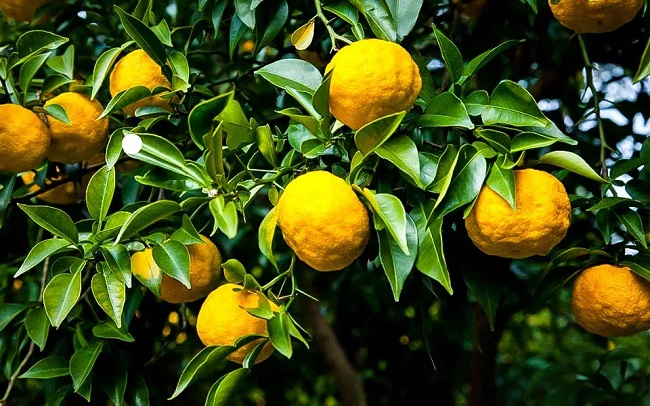
Yuzu (Citrus junos) is a unique and highly prized citrus fruit known for its distinct flavor, aromatic zest, and rich cultural heritage. Originating in East Asia, particularly Japan and Korea, yuzu has gained popularity worldwide due to its versatile culinary uses. Whether you have a spacious garden, a cozy home, or a dedicated greenhouse, growing yuzu can be a rewarding and fulfilling experience. In this guide, we will explore the essential steps to successfully cultivate yuzu plants in various settings.
Choosing the Right Location
Garden
Yuzu thrives in a sunny location with well-draining soil. Select a spot that receives at least 6-8 hours of direct sunlight daily. Ensure the soil is slightly acidic, with a pH range of 5.5 to 6.5.
Home
If growing yuzu indoors, place the plant near a south-facing window to provide ample sunlight. Supplement with artificial lighting if necessary, using full spectrum grow lights.
Greenhouse
Yuzu plants flourish in a controlled greenhouse environment, where you can regulate temperature, humidity, and sunlight. Aim for a temperature range of 65-85°F and maintain humidity levels around 50-60%.
Planting and Care
Garden
Plant yuzu in well-prepared soil enriched with organic matter. Choose a location protected from strong winds. Dig a hole slightly larger than the root ball, place the plant at the same depth as it was in the container, and backfill with soil. Water thoroughly after planting.
Home or Greenhouse
Select a large container with drainage holes for indoor or greenhouse cultivation. Fill the container with a well-draining potting mix formulated for citrus plants. Plant the yuzu at the same depth as it was in its original container.
Watering
Yuzu plants prefer evenly moist soil. Water thoroughly when the top inch of soil feels dry. Avoid waterlogging, as yuzu does not tolerate soggy roots.
Fertilization
Feed yuzu with a balanced, slow-release citrus fertilizer during the growing season (spring through summer). Follow the manufacturer’s instructions for application rates.
Pruning
Regularly prune yuzu to maintain a healthy shape and promote airflow. Remove dead or diseased branches, as well as any growth that crosses or crowds the center of the plant.
Pollination
Yuzu plants are self-pollinating, but outdoor cultivation may benefit from cross-pollination by bees and other pollinators.
Harvesting and Storage
Harvesting
Yuzu fruit typically ripens in late fall to early winter. Harvest when the fruit reaches its full size and turns yellow to orange. Gently twist the fruit from the stem or use pruning shears to avoid damaging the plant.
Storage
Yuzu fruit can be stored at room temperature for a few days or in the refrigerator for up to a few weeks. Alternatively, you can extract the juice and zest for culinary use and freeze it for longer storage.
Conclusion
Cultivating yuzu, with its delightful aroma and zesty flavor, can be a rewarding endeavor whether you have a garden, a home with a sunny window, or a well-equipped greenhouse. By providing the right conditions, proper care, and a touch of patience, you can enjoy the satisfaction of growing this unique citrus fruit and incorporating it into your culinary creations. Whether you’re adding a touch of exotic flair to your garden, infusing your home with its refreshing scent, or carefully tending to a greenhouse treasure, the journey of growing yuzu is a delightful exploration of nature’s wonders.
11 Fun Facts About Yuzu Plant
Ancient Origins
Yuzu is believed to have originated in East Asia, particularly in China and Tibet, before spreading to Japan and Korea. It has been cultivated for centuries and has deep cultural significance in these regions.
Hybrid Origins
Yuzu is thought to be a natural hybrid between the sour mandarin (Citrus ichangensis) and the Ichang papeda (Citrus cavaleriei). This hybridization contributes to its distinct flavor profile.
Cold-Hardy Citrus
Yuzu is more cold hardy compared to many other citrus varieties. It can withstand colder temperatures and is known to survive mild frosts, making it suitable for cultivation in regions with cooler climates.
Aromatic Zest
Yuzu zest is highly aromatic and is a popular ingredient in culinary dishes, sauces, and beverages. Its intense aroma is often likened to a combination of mandarin, lemon, and grapefruit.
Culinary Delight
Yuzu is a staple in Japanese cuisine and is used to add flavor and fragrance to a variety of dishes, including sauces, marinades, dressings, and desserts. Yuzu juice is also a key ingredient in ponzu sauce.
Cultural Significance
Yuzu is deeply embedded in Japanese culture and is associated with winter and traditional bathing practices. Yuzu baths, known as “Yuzuyu,” are a cherished custom in which whole yuzu fruits are floated in hot water for relaxation and enjoyment during the cold season.
Versatile Uses
Yuzu is not only used for its culinary qualities but also for its aromatic properties. Yuzu essential oil is extracted from the fruit’s peel and is used in aromatherapy and skincare products for its uplifting and invigorating scent.
Rare and Exotic
Yuzu is considered a rare and exotic citrus fruit in many parts of the world, and its availability can be limited. As a result, it is highly prized by chefs and food enthusiasts for its unique flavor.
Yuzu Farming Festivals
In Japan, yuzu is celebrated with local festivals known as “Yuzu Matsuri.” These festivals showcase various yuzu products, including foods, beverages, and cosmetics, while also honoring the fruit’s cultural significance.
Medicinal and Health Benefits
Yuzu is valued not only for its culinary applications but also for its potential health benefits. It is rich in vitamin C and antioxidants, which are believed to contribute to its immune-boosting properties and potential therapeutic effects.
Global Popularity
Yuzu’s popularity has spread beyond its Asian origins and has gained recognition in international cuisine. Its unique flavor has inspired chefs and mixologists around the world to incorporate it into their creations.
Related Articles & Free Email Newsletter Sign Up
Aralias Provide an Exotic Look in Many Different Colors
Haworthias are Super Succulents for Small Spaces
How to Grow Caladiums for Outdoor Landscapes and Greenhouse Containers




Comment here